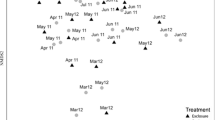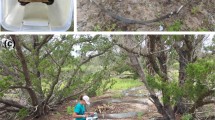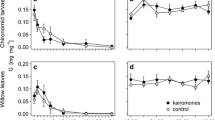Abstract
Predators affect prey populations not only by prey consumption but also in nonconsumptive ways including modifying prey behavior. I tested the effects of fire salamander larvae (Salamandra infraimmaculata) on populations of co-occurring crustacean species in artificial outdoor pools. I also tested whether these effects were due entirely to prey consumption by Salamandra larvae or alternatively to some nonconsumptive effect. The soil (containing crustacean eggs) added to the artificial pools was collected from a dried-out temporary pool that is inhabited by Salamandra during the early part of the hydroperiod. I randomly assigned the pools to one of three treatments: control, free Salamandra, or caged Salamandra. Free salamander larvae could roam the entire pool and prey upon crustaceans. Caged salamander larvae were placed within a cage with having 250-μm mesh windows. They could not prey upon the crustaceans but could, for example, influence them by chemical cues. Densities of the three dominant crustacean species (Arctodiaptomus similis, Ceriodaphnia quadrangula and Cyzicus sp.) were drastically reduced in both salamander treatments compared to the control. Crustacean densities, however, were not significantly different between the two salamander treatments. One plausible explanation is that crustacean eggs can detect the presence of this predator via chemical cues and delay hatching.
Similar content being viewed by others
Author information
Authors and Affiliations
Additional information
Received: 4 March 1996 / Accepted, 23 October 1996
Rights and permissions
About this article
Cite this article
Blaustein, L. Non-consumptive effects of larval Salamandra on crustacean prey: can eggs detect predators?. Oecologia 110, 212–217 (1997). https://doi.org/10.1007/s004420050152
Issue Date:
DOI: https://doi.org/10.1007/s004420050152




